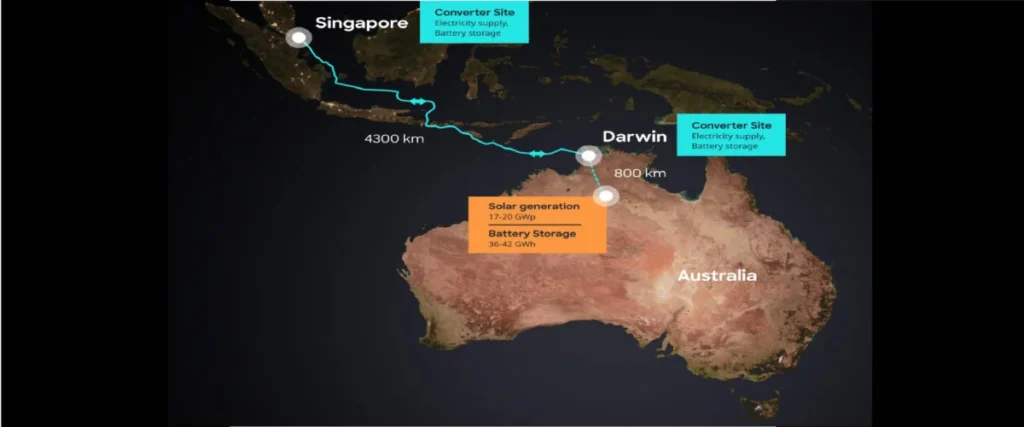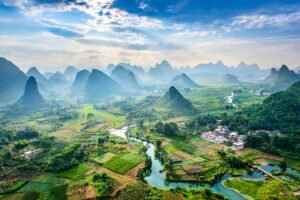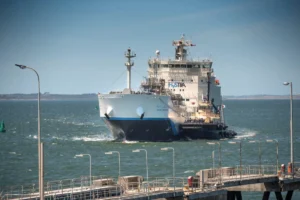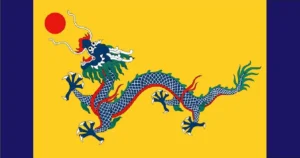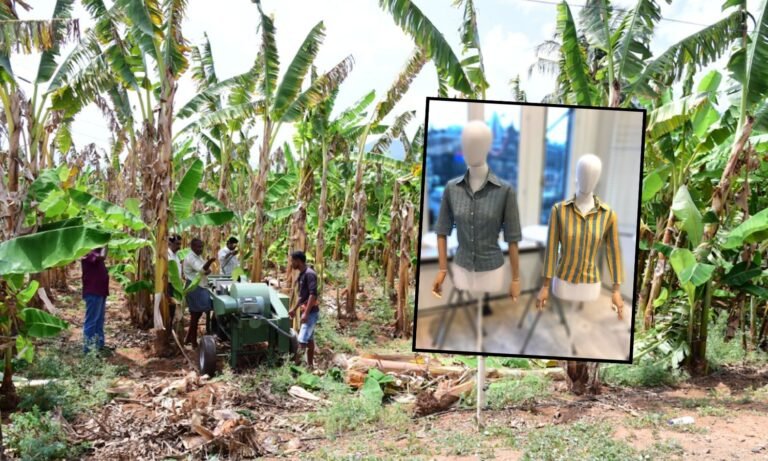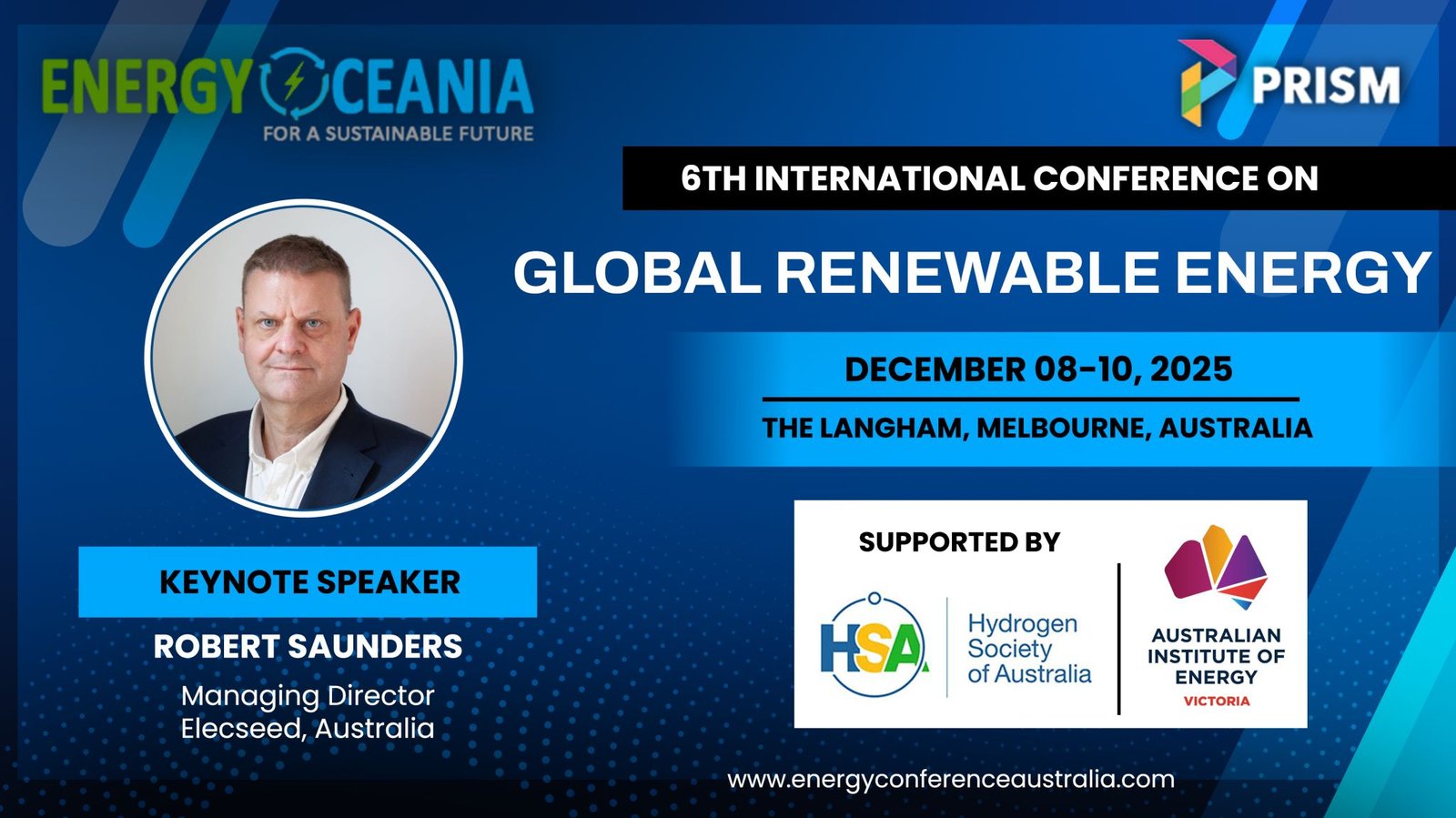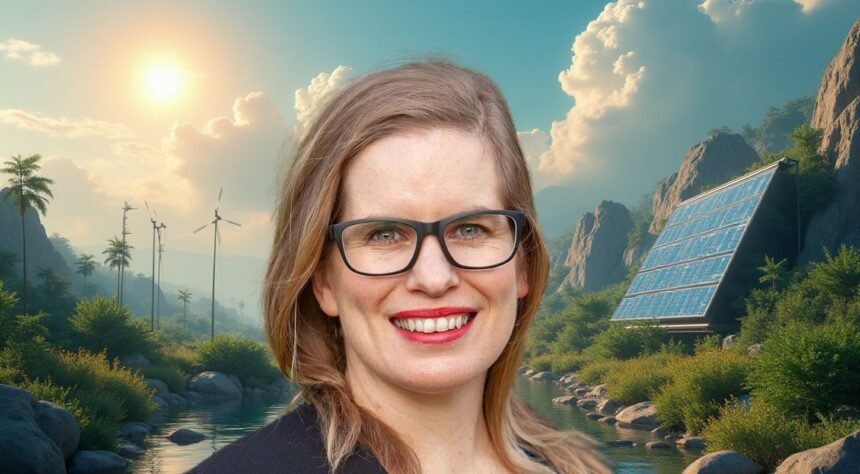Australia Grok Ventures AUD$8 bil SunCable is an ambitious project to power Singapore with 1.75GW of 24/7 Solar Energy via a subsea 4,300km cable. Anticipated to be the world’s biggest energy and battery storage facility, from a 12,000ha Solar Power Station south of Darwin, in the Northern Territory Australia. Construction starts in 2025, to be completed in 2029.
SunCable’s flagship development project, Australia-Asia Power Link (AAPowerLink), will harness and store renewable energy from one of the most reliably sunny places – Australia’s Northern Territory – for 24/7 transmission to Darwin and Singapore via a high voltage direct current (HVDC) transmission system. The project includes the development of the world’s biggest integrated renewable energy and battery storage facility in the heart of the Northern Territory which could over multiple stages have a capacity of up to 6GW of renewable energy to Darwin and Singapore. This project will continue to be developed by SunCable’s management team with support from Grok Ventures.
AAPowerLink plans to capture the electricity harvested from a giant integrated renewable energy and battery complex on Powell Creek in the Barkly region Northern Territory and transmit this through ~800km of overhead transmission to the Darwin region and then on to Singapore via 4,300km of subsea cables.
As electricity demand in the Asia Pacific is set to increase by 70 per cent by 20402 and more than double by 2050 according to IEA Report, Green electricity imports are one of the key ways that Singapore is aiming to reduce its greenhouse gas emissions and reach net-zero emissions by 2050.
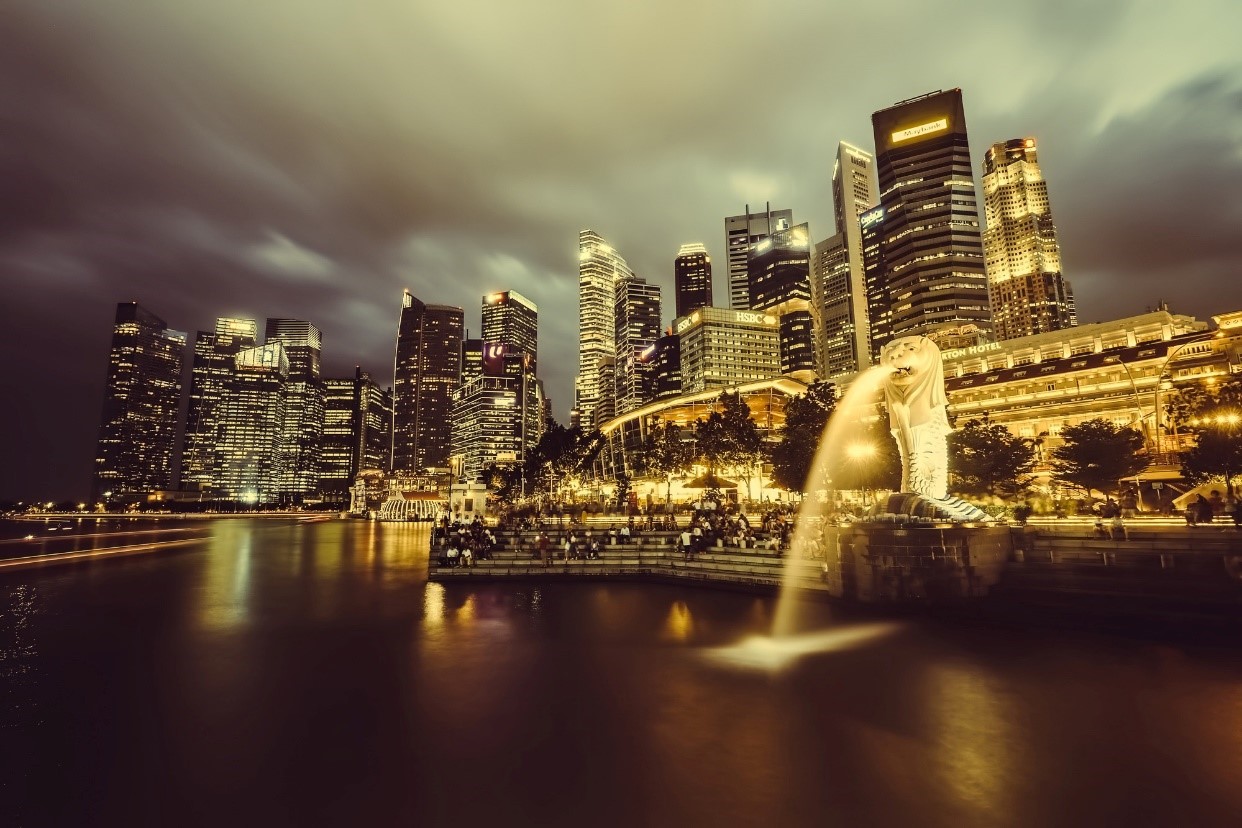
By EMA calculations of systems peak demand, Singapore is in the trajectory to increase their power demands to 9.6GW to 11.6GW by 2028, and 10.1GW to 11GW by 2032- currently sitting at 7.9 GW.
Fraser Thompson, co-founder and Chief Strategy Officer of Sun Cable told Singapore’s The Straits Times, that SunCable has submitted their RFP2 to the Energy Market Authority (EMA) which closed in December 2023.
Under the EMA RFP2 programme, potential importers will have to demonstrate their supply reliability, credibility, track record, cost-competitiveness, and ability to supply and manage the carbon output of their power generation supply. Participants of the RFP are expected to develop hydrogen-ready and lower-carbon intensity solutions and technologies to contribute to the development of a greener and more resilient power system.
AAPowerLink has the potential to create thousands of jobs, a host of opportunities for local businesses and suppliers, plus investment in Australia, Singapore and Indonesia.
The overhead transmission line will generally follow the footprint of the Alice Springs to Darwin Railway Corridor. Overhead transmission will reduce the disturbance footprint for construction and maintenance, increase safety, allow flexibility in route selection through the ability to span sensitive receptors like water courses, habitats, and sacred sites, enable the infrastructure to coexist with other infrastructure, and free land underneath the lines for alternative uses.
Chris Tyrrell, SunCable Chief Projects Officer, said “Australia has an abundance of sunshine and wind. HVDC cable enables the export of this natural resource to the world, establishing Australia as a renewable energy superpower as well as an advanced manufacturing hub for critical supply chains. The use of high voltage subsea cables over long distances has a critical role to play in the global energy transition and solving for the transmission of green electrons within and between countries”.
SunCable has identified Bell Bay, Tasmania as a potential site for an advanced cable manufacturing facility.
Subject to community consultation and regulatory approvals, the Bell Bay manufacturing facility could create 800+ construction jobs and 400+ operational roles, while supporting Australia’s green energy ambitions. If it goes ahead, construction is scheduled to commence in 2025.

